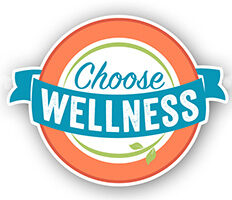It’s not really debatable that we should be wearing sunscreen. I mean there is clear evidence that the skin’s rays can accelerate the aging process and potentially lead to skin cancer. However, when we look at the sunscreen market, it can be very confusing! Most people take the stance that any sunscreen is good (because it’s protecting you) and I tend to agree, BUT if you are making a switch to clean and non-toxic products, there are a few additional things that you should know.
And while there is overwhelming evidence that sunscreen protects us from the sun and prevents skin cancer, now consumers are asking if they are getting additional toxins and doing more harm than good.
Proper Sun Protection Is Always KEY!
First of all, don’t stop wearing sunscreen! Follow proper sun protection recommendations – cover-up, wear a hat and try to avoid the peak times of sun exposure (between 10am-2pm). And when you are applying sunscreen, make sure you are applying enough! This means about a shot glass size to the areas of exposed skin and reapplying when needed.
What Kind Of Protection Do I Need From Sunscreen?
There are two types of UV rays that we are concerned about. The UVA rays, which are the longer rays that penetrate deep into the skin and are responsible for long-term sun damage and UVB rays which are shorter rays and what we attribute to sunburns. We need our sunscreen to protect us from both (SPF protects us from UVB; look for the term “broad spectrum to ensure protection from UVA).
The EWB states recommends a max Sun Protection Factor (SPF) of 50 and advises that a higher SPF over promises and can be misleading. The ratio of UVA protection decreases as SPF increases. Because of this, in 2019, the FDA proposed a SPF cap of 60. Those proposed rules were thrown out with the passage of sunscreen legislation included in a coronavirus stimulus bill. It is expected that the FDA will reintroduce similar rules within the coming year.
Chemical Sunscreen
There are two types of sunscreen on the market, chemical and mineral. Chemical sunscreen works by absorbing the sun’s rays, converting them to heat and then releasing them from the body.
As we know, drugs or ingredients that have been around for a long time are often grandfathered in. So, when the FDA began to consider sunscreen safety, it grandfathered in active ingredients from the late 1970s without reviewing the evidence of their potential hazards. In February 2019, the agency released its final draft sunscreens monograph, which contains “insufficient health and safety data to designate 12 of the 16 sunscreen filters allowed for use in the U.S. as ‘generally recognized as safe and effective’. These 12 ingredients include some of the most commonly used UV filters, including oxybenzone, octinoxate, octisalate, octocrylene, homosalate and avobenzone.”
The 2019 proposal from the FDA also concluded that the risks of using aminobenzoic acid, or PABA, and trolamine salicylate outweigh their benefits, and it proposed classifying them as unsafe. The FDA-proposed monograph gave the GRASE designation to just two active sunscreen ingredients: zinc oxide and titanium dioxide.
Why I Recommend Mineral Sunscreen
Mineral sunscreen works by adding a protective layer on the skin that acts as a physical barrier. There are two ingredients – zinc oxide and titanium dioxide – that the FDA and EWG have recognized as safe. We want to block both UVA and UVA. Titanium dioxide only blocks UVA, zinc oxide blocks both.
Because of the lack of safety studies around the chemical sunscreen ingredients, and the fact that some have been shown to disrupt hormone regulation, specifically estrogen , I recommend mineral sunscreen over chemical especially for children and women of child-bearing age.
The main con of mineral sunscreen is that it takes awhile to rub in and sometimes you get a white residue.
https://www.thepharmacistsguide.com/blog/2020/8/5/how-to-choose-the-best-sunscreen


